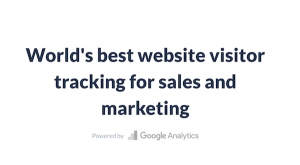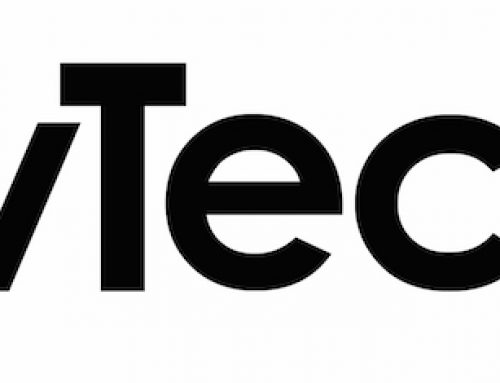I have always been interested in the generation of qualified marketing leads out of previously anonymous web traffic. So, in advance of sharing my Q4 2017 Digital Tools guide, I am testing out a relatively new player in the market called Leadfeeder. So far so good, the dashboard has a great look and feel – and works well (I have converted 2 leads this month) so I asked Dylan Hey one of their UK team if he would answer a few questions…

Which business types use Leadfeeder most effectively?
Honestly, we find that almost any B2B business will see value from using our tool. Our client base ranges from small startups with only a couple of members right through to larger enterprise companies. I would say that if you are focusing on driving traffic to your website and you care about online lead generation then you should be using a tool like Leadfeeder to help you generate more sales.
Could you please tell me how Leadfeeder works and what information it gives the user?
Sure. Leadfeeder is a website visitor tracking software. This means that we are able to show you information such as which companies have been visiting your website, which pages they have been viewing and where the visitors are coming from. We integrate into your Google Analytics and other marketing tools to turn your website visitors into sales leads.
So how do we do this?
In simple terms, Leadfeeder works by pulling information from your Google Analytics account (via the Google Analytics API) and combining visitor information with IP address data. This IP address data is then enriched to show you not only the companies that have visited your site but other information about them too.
Why is using Google Analytics as a platform better than other methods/competitors?
Using a tool like ours that integrates with your Google Analytics account vs a tool that embeds a tracking pixel on your website gives you a couple of advantages. Firstly, the setup process is much faster and simpler, with a couple of clicks you will be up and running when using Leadfeeder. We can also backload the last 30 days worth of data from your Google Analytics account so you are able to see previous visitors to your website. If you place a tracking pixel on your website, however, you are only able to start monitoring visits from that moment forward. Because of our technology partnership with Google, we are also able to supply much more accurate, worldwide data as we are not relying on a self-created database like some of our competitors.
When presented with a list of warm website visitor leads how do you suggest a sales team uses them most effectively?
This question is hard for me to answer as when it comes to selling there is never a one size fits all approach. It really depends on a number of different factors as well as what you feel comfortable with. That being said I am a huge social selling advocate. The data that is available to businesses and sales teams through the use of Leadfeeder can really help supercharge your social selling efforts. For me, it’s important to lead with insight and data to educate your clients and prospects.
Platforms are always evolving, what new functionality do you have coming out in Q4 2017?
We are currently in the process of rolling out a really new exciting feature to our users called Leadfeeder Contacts. You will hear a lot more about this over the coming weeks but I can give you a little sneak peak. Soon all Leadfeeder users will have access to additional company information such as contact details and social media links for their target buyer personas at the companies who have been visiting their website.

Leave A Comment